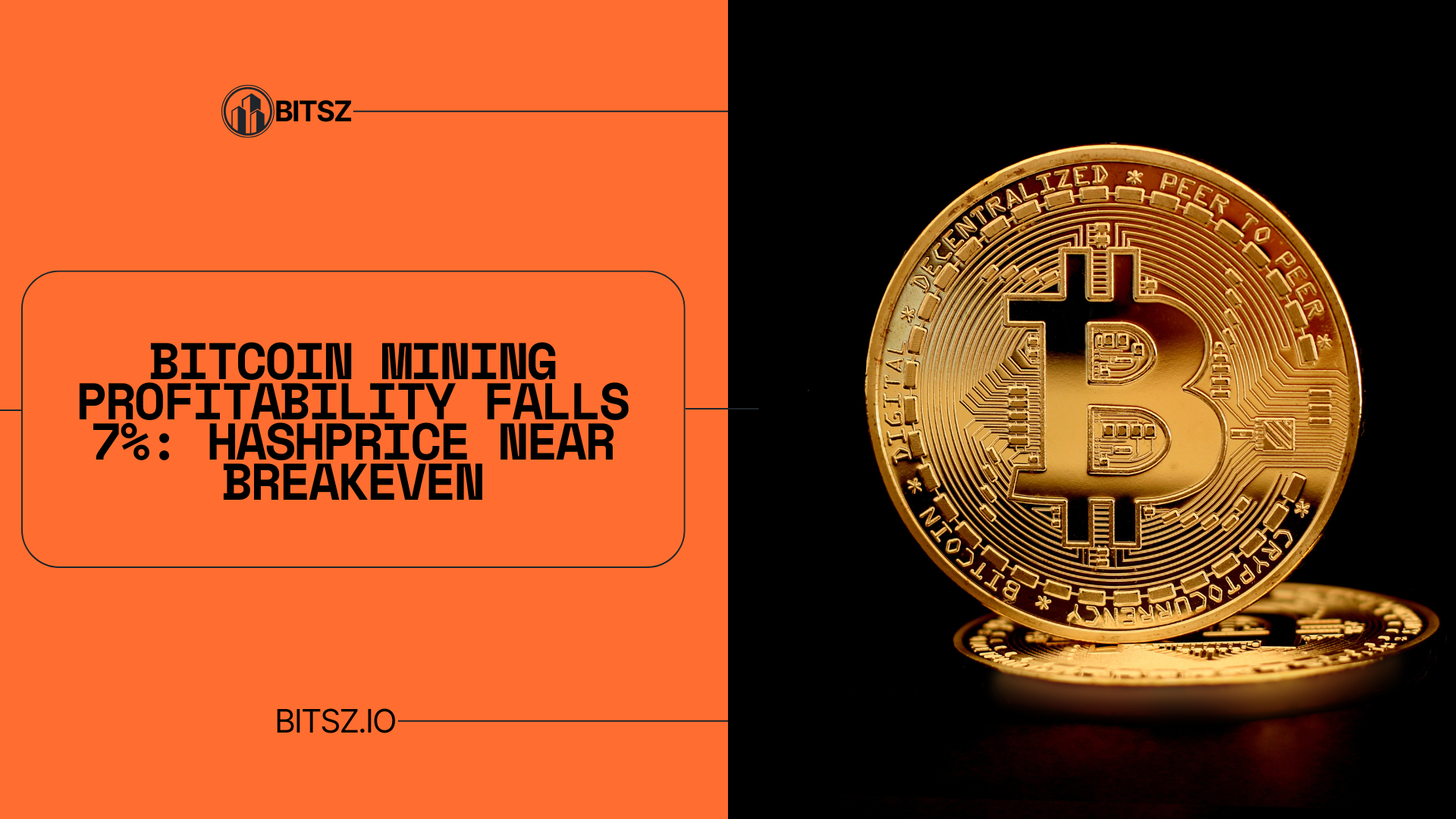
Bitcoin miners just endured another earnings squeeze. In September, profitability declined by more than 7%, with estimated daily revenue per 1 EH/s sliding from $56,000 to $52,000, according to a Jefferies note summarized by CoinDesk and picked up by ForkLog. The bank attributes the drop to a modest market pullback and a ~9% jump in network computing power, which pushed difficulty higher and split the same rewards among more machines.
Jefferies also tallied output from North America’s listed operators: public miners produced 3,401 BTC in September, down from 3,576 BTC in August, with Marathon Digital and CleanSpark among the leaders by production and hashrate. The takeaway is simple: when network capacity expands faster than revenue inputs, unit economics compress—even for scale players.
Hashprice is hugging the floor
A quick refresher: hashprice is the expected miner revenue per unit of hashrate per day (e.g., USD per PH/s/day). It packages block subsidy, transaction fees, and coin value into a single, operational metric. Luxor’s Hashrate Index—the industry’s most-referenced barometer—shows spot hashprice hovering in the high-$40s per PH/s/day in mid-October, a zone many operators describe as “near breakeven” depending on power costs and rig efficiency.
That aligns with the monthly lookback from Luxor’s team: USD hashprice fell ~7–8% in September to an average near $52.06 per PH/s/day, then eased further in October. When hashprice drifts lower while hashrate climbs, older-generation machines and high-cost power become a liability quickly.
Why margins tightened: two forces, one outcome
- More hashrate chasing the same rewards. Jefferies estimates network capacity rose ~9% month-over-month, which mechanically reduces each miner’s expected share of block rewards unless fee revenue or coin valuations rise to offset. Difficulty followed higher, raising the bar for the next block.
- Softer September tape. Even a modest market dip can shave top-line revenue when combined with hashrate expansion. That double effect—less revenue per coin and more competition per block—was enough to push profitability lower on the month.
What miners are doing right now
- Upgrading fleets and tuning watts/TH. With hashprice stuck near the high-$40s, efficiency is destiny. Operators are accelerating swaps into next-gen ASICs, experimenting with immersion cooling and firmware to optimize joules per terahash, and curtailing during peak power windows to protect margins. Luxor’s dashboards and commentary make clear that the breakeven line now heavily depends on electricity contracts and machine class.
- Hedging revenue. As Cointelegraph notes in a miner primer, producers increasingly use hashrate forwards and fixed-payout contracts to smooth cash flows, much like energy companies hedge commodity exposure. Locking in a slice of future hashprice can be the difference between steady operations and whipsaw income.
- Selective HODL vs. sell. Treasury strategy is becoming more dynamic: some firms sell more coins during low-fee months to cover opex and preserve runway; others lean on financing lines and keep balances for optionality when conditions improve. Public disclosures over the next quarter will clarify whose strategies worked best during this squeeze.
The fee wildcard
Transaction fees are the swing factor that can surprise to the upside. When base-layer activity spikes—whether from inscription waves, market stress, or novel use cases—fee revenue fattens blocks and lifts hashprice even without changes to issuance. Conversely, if activity migrates to L2s without corresponding base-layer congestion, miners lean more heavily on the subsidy and prevailing market levels. Watching fee share of total revenue is an efficient early signal for near-term cash-flow relief.
Public miners: production stays resilient, efficiency gaps widen
Despite the profitability dip, the industry’s largest operators still posted solid outputs. Jefferies’ snapshot shows September production down month-over-month but broadly resilient, with Marathon and CleanSpark leading by mined coins and installed capacity. Scale helps—so do vertically integrated power strategies—but as difficulty grinds up, the spread between top-quartile and bottom-quartile efficiency grows. Over time, that tends to drive consolidation: efficient fleets with cheap power survive; marginal operations power down or sell assets.
Final Words
September’s 7% drop in mining profitability is the product of a classic squeeze: a small market downtick paired with a big jump in hashrate. The math shows up immediately in hashprice, which sits in the high-$40s per PH/s/day, uncomfortably close to breakeven for older fleets and expensive power. Yet this is not a story of collapse—it’s a stress test. The sector has levers (efficiency upgrades, hedging, curtailment) and potential tailwinds (fee spikes, difficulty relief) that can restore margin quickly when conditions shift. For now, the winners are the miners who treat watts per terahash as a religion, hedge revenue when it’s offered, and keep enough balance-sheet stamina to ride out the lean weeks.